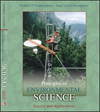Environments and Species Distributions
The Breeding Bird Survey (BBS) is one of the most comprehensive, current population
databases available. This database, maintained by the Biological Resources Division
of the USGS, documents population fluctuations and geographic ranges of birds
across the US and southern Canada. Go to the BBS web site, http://www.mbr-pwrc.usgs.gov/bbs/bbs.html.
Click on the "Distribution Maps" option on this page. This produces a list of
the birds in North America. You can see species distribution and breeding density
maps by clicking on the name of any species. Find these species in the list
and look at the map for each in order to answer the questions below:
double crested cormorant
great blue heron
wood stork
American Robin 1. Assuming that generalist/opportunistic species are widespread and more or
less uniformly distributed, which of these species would you guess are generalists,
and which might be specialists, with narrow niche preferences or environmental
tolerance ranges? As you look at the range maps, consider especially each species'
climate range, presence in densely populated areas, and evenness of distribution
throughout the species' range. If you are unsure of environmental conditions
across the continent, refer to the precipitation, biome, and climate maps in
your book.
double crested cormorant
great blue heron.
wood stork
American Robin 2. Also look at the map for the bald eagle. Would you guess that temperature,
water, forest cover, or mountainous terrain best explains its distribution?
Why might this be so?
Now look at the range of the American dipper. Which of the four variables above
best explain(s) its distribution? Diversity in Taxonomic Groups
Go to the BBS taxonomic list, http://www.mbr-pwrc.usgs.gov/bbs/htm96/map617/all.html.
Count the number of heron species. Now count the number of warbler species.
What traits or ecological adaptations can you think of to describe these two
groups? (For information and photos for each species, go to the Bird Information
page on the BBS home page: http://www.mbr-pwrc.usgs.gov/id/framlst/framlst.html.)
How might their different lifestyles or environments or suites of competitive
species help explain differences in diversity in these two groups? |



 2002 McGraw-Hill Higher Education
2002 McGraw-Hill Higher Education